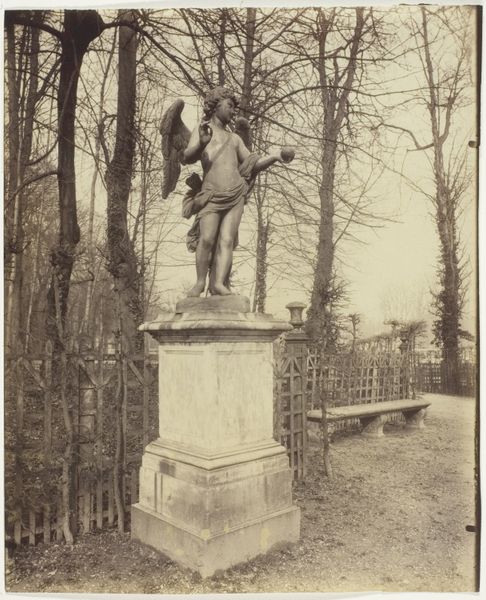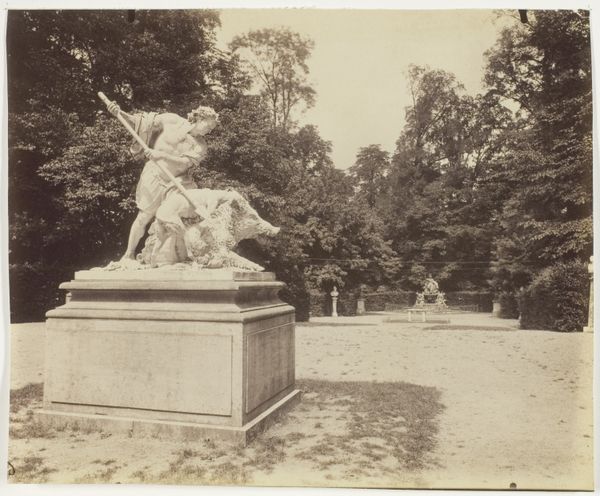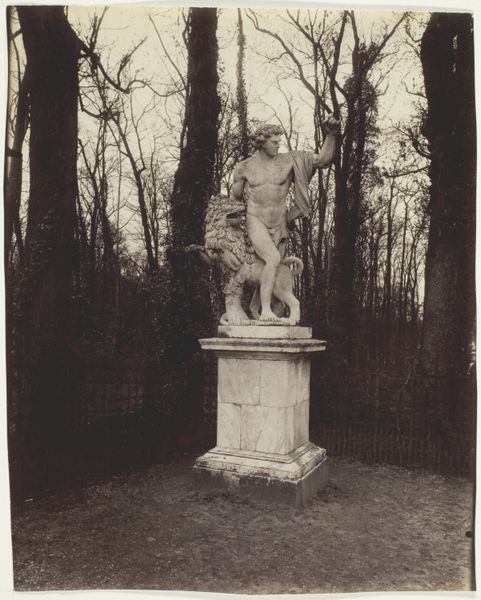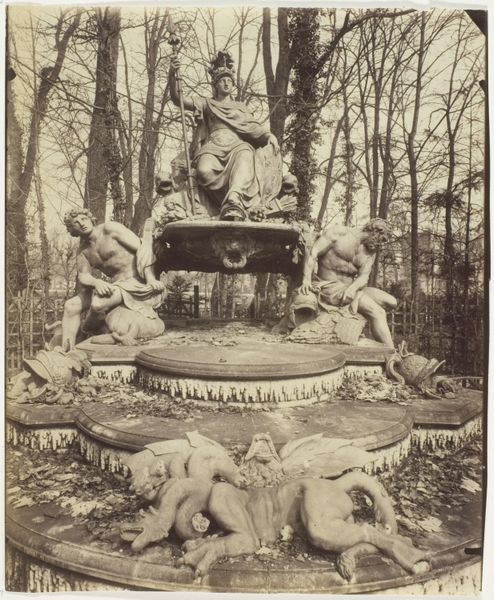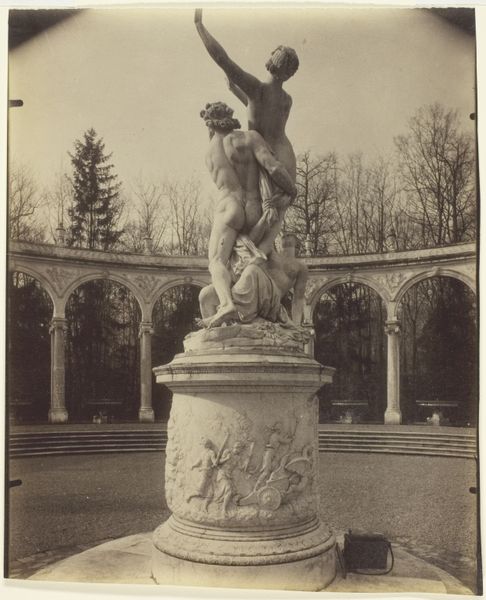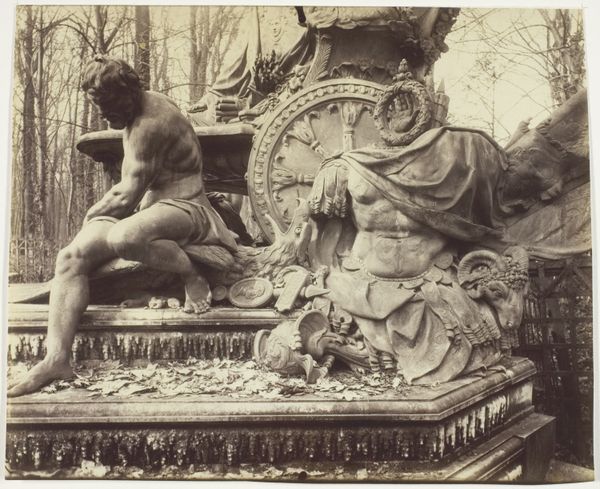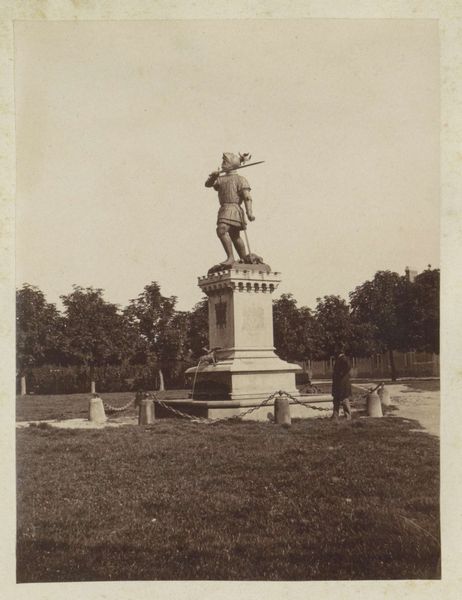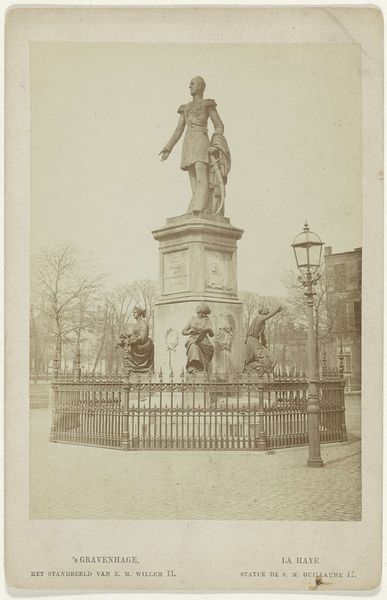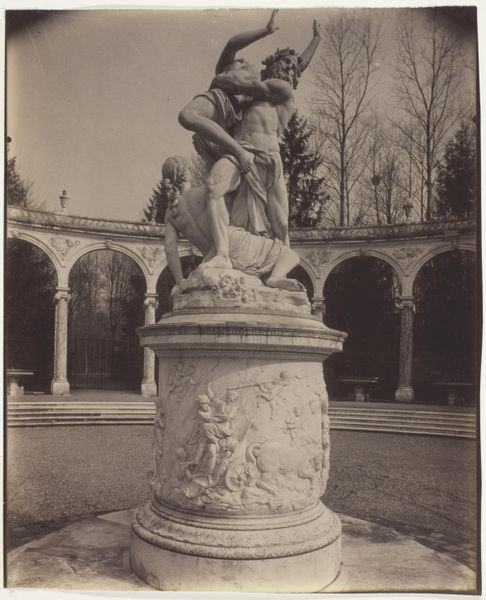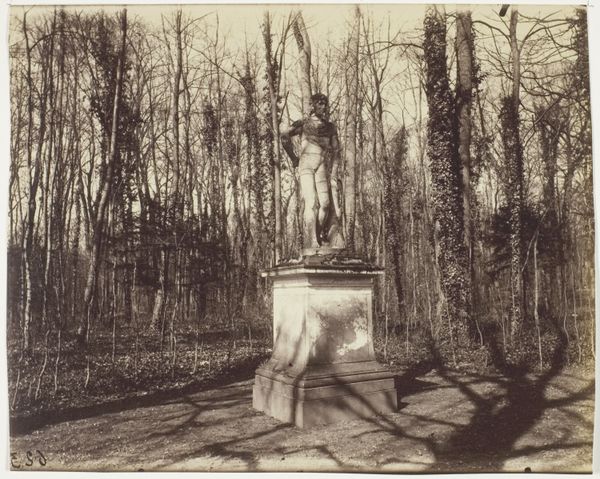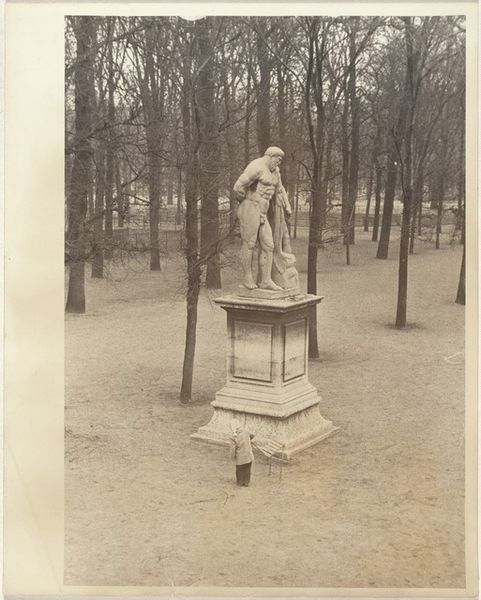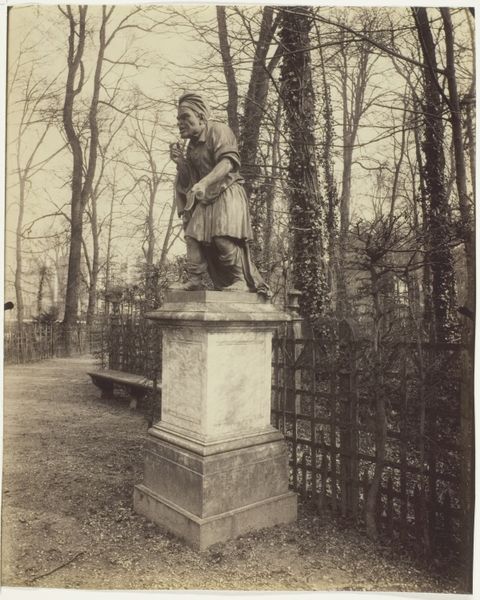
print, photography, sculpture
# print
#
sculpture
#
landscape
#
photography
#
sculpture
#
academic-art
#
realism
Dimensions: 21.9 × 17.6 cm (image); 21.9 × 17.8 cm (paper)
Copyright: Public Domain
Curator: I find this image incredibly evocative. Eugène Atget captured "Versailles, Bosquet de l'Arc de Triomphe" in 1904. The print resides here at the Art Institute of Chicago. Editor: My first impression? Stark. It's a study in contrasts, the raw power of the sculpture set against the bare trees. There’s a muted quality in the print that gives it a haunted, timeless feel. Curator: Indeed. Atget documented pre-revolution Parisian culture, capturing a disappearing world. We often interpret his photography as preservation and record, reflecting how civic life was structured. Editor: And he chose well with this subject matter. Look at the boar – such a loaded symbol of wildness, paganism and, frankly, the unrestrained power of nature tamed only by force, as represented by the figure above it. It evokes images of mythic hunts and primal instincts. Curator: It's more complicated than just a symbol of wildness. Gardens such as those in Versailles presented, in constructed form, humanity’s control over that wildness; here in stone we see a perfect reflection of an ordered vision – and an absolutist royal prerogative. Editor: I agree, and this contrast represents one of the fundamental questions of our nature and role within our ecosystem. Consider the choice of a hunter figure atop the beast – a cultural endorsement of power, but also the uneasy tension between opposing forces. Curator: Beyond its symbolic function, it reveals how Atget skillfully presented statuary within carefully managed landscapes. These images informed and mirrored broader societal dynamics that privileged social hierarchies. Editor: I'm compelled by the figure’s downcast gaze, almost mournful. It's not just about conquest, is it? Maybe there's a hint of regret or recognition of something lost. Atget invites these sorts of nuanced readings through these very still photographs. Curator: A poignant way to look at Atget's work—highlighting human ambivalence to these symbols—that’s an angle to consider alongside a vision of controlled landscapes shaping social order! Editor: Exactly. It shows how seemingly straightforward imagery carries multitudes within its art historical framework. Curator: Thank you for helping unpack it.
Comments
No comments
Be the first to comment and join the conversation on the ultimate creative platform.
